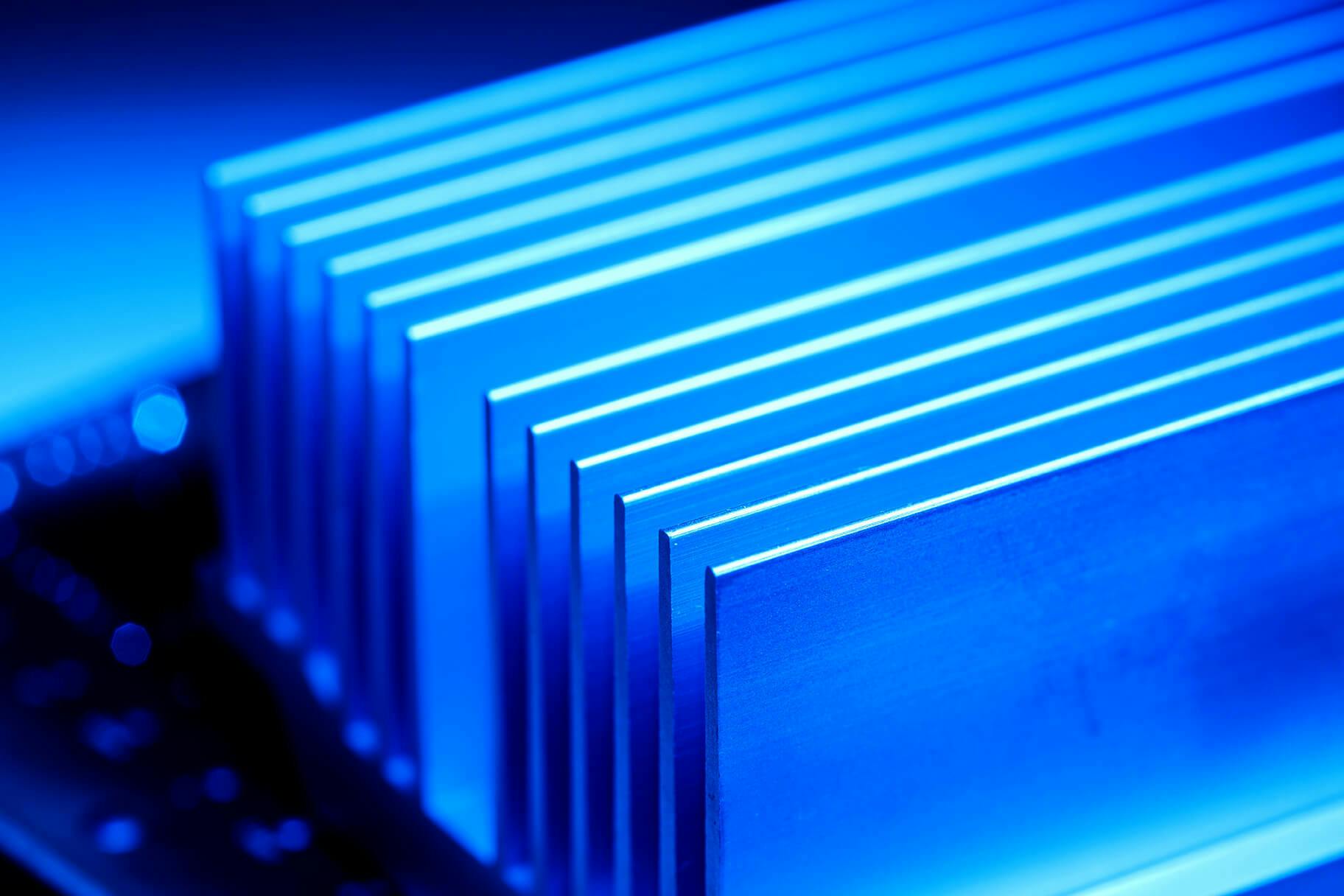When selecting or designing a heatsink the following factors must be considered:
Thermal resistance
The heat flow between the semiconductor die and ambient air is modelled as a series of resistances to heat flow; there is a resistance from the die to the device case, from the case to the heat sink, and from the heat sink to the ambient.
Material
The most common heat sink materials are aluminium alloys. Aluminium alloy 1050A has one of the higher thermal conductivity values at 229 W/m•K but is mechanically soft. Aluminium alloys 6060 and 6063 are commonly used, with thermal conductivity values of 166 and 201 W/m•K, respectively. The values depend on the temper of the alloy.
Fin efficiency
A fin of a heat sink may be considered to be a flat plate with heat flowing in one end and being dissipated into the surrounding fluid as it travels to the other. As heat flows through the fin, the combination of the thermal resistance of the heat sink impeding the flow and the heat lost due to convection, the temperature of the fin and, therefore, the heat transfer to the fluid, will decrease from the base to the end of the fin.
Spreading resistance
Spreading resistance occurs when thermal energy is transferred from a small area to a larger area in a substance with finite thermal conductivity. In a heat sink, this means that heat does not distribute uniformly through the heat sink base. The spreading resistance phenomenon is shown by how the heat travels from the heat source location and causes a large temperature gradient between the heat source and the edges of the heat sink.
Fin arrangements
A pin fin heat sink is a heat sink that has pins that extend from its base. The pins can be cylindrical, elliptical or square.
A pin is by far one of the more common heat sink types available on the market. The second type of heat sink fin arrangement is the straight fin. These run the entire length of the heat sink. A variation on the straight fin heat sink is a cross cut heat sink. A straight fin heat sink is cut at regular intervals.
Surface colour
In situations where convection is low, such as a flat non-finned panel with low airflow, radiative cooling can be a significant factor. Here the surface properties may be an important design factor. Matte-black surfaces will radiate much more efficiently than shiny bare metal in the visible spectrum. A shiny metal surface has low effective emissivity due to its low surface area.
ABL Heatsinks
ABL can supply a wide range of heatsinks including bespoke design and post-processing to bring the heatsink to a near or finished state. Their interactive performance graph allows designers not only to determine the size and type of heatsink they need but also to compare the performance of two heatsinks simultaneously.
ABL Heatsinks have worked with many clients to provide tailored solutions to their requirement for aluminium heatsinks in the electronics sector. ABL’s ability to offer a one-stop shop solution provides a unique service for their customer base, located both in the UK and around the world.
Their experience in this sector, aligned with the capabilities and equipment they have in-house, make ABL the ideal partner for all your needs in the electronics equipment market.
Contact ABL today to learn more about how they can assist you in the heatsinks market.
Tel:+(0)44 121 789 8686 or visit their website at https://www.ablcomponents.co.uk...
